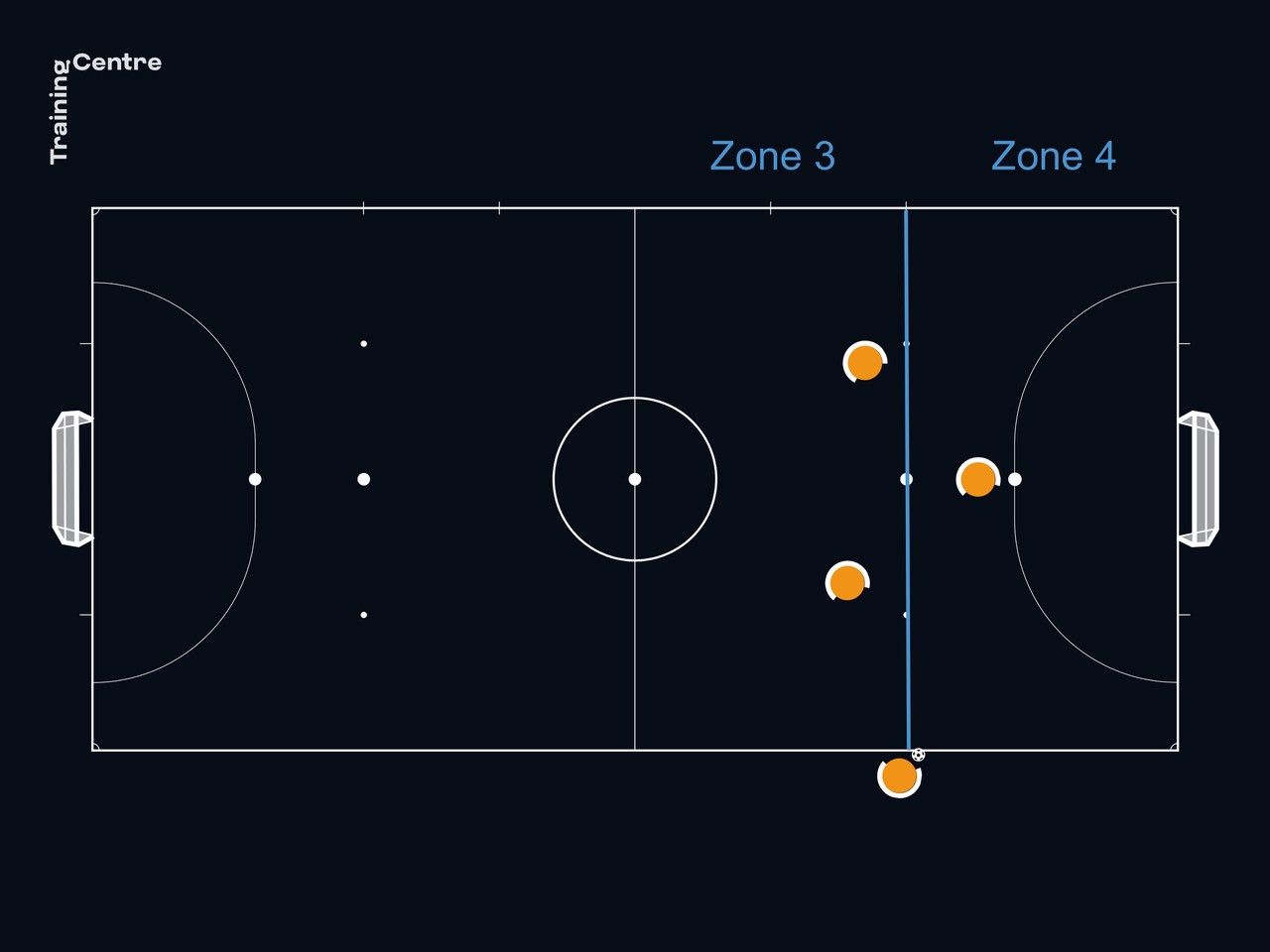Observations

Almost all kick-ins in zone 4 and the vast majority in zone 3 (a maximum of 12-13 metres) were straight from the tactics board. This means the ball goes out, the players get into position with the taker shouting a code word (a number, a colour, a name, etc.) and carrying out the set play within the regulation four seconds. Some teams, despite a disorganised opposition defence and a clear opportunity for a quick, sudden kick, actually turned this option down. Rather, 99% of teams trusted their tactics board. This provides food for thought when considering that a quick kick-in offers more speed and could mean a better chance of getting a goal.
When there was no time to call on the tactics board, in general, teams preferred to play the ball “back” and start out in a 3-1 formation before putting it into the box to finish. The attacking phase and the order took priority over the finishing.
New features with kick-ins
The modification to the kick-in rule which permits the taker to step on the touchline has led to new situations. Here, the initial taker tries to trick the defence as he moves from beside the ball to the back post, with a different taker taking over and looking to find him at the back post.
Kick-in implementation
Some kick-ins were more direct and others were more elaborate. In general, the aim was to get the ball to the pivot.
Tactical components of kick-ins
Blocks
One important point is the use of the block by all coaches. There were two common types of blocks that were evident in Lithuania: the direct block and the block and show.
Feint
Another vital point for successful kick-ins is the use of the feint to trick the opposition.
Position
It sometimes goes unnoticed, but every coach takes care over the correct position of the taker before, during and after the kick-in → standing up, observing everything and then leaning down lower, but keeping their head up, watching and analysing the situation in order to choose the best option. Some take their foot off the ball, while others keep their foot on it till the end.
Timing
Another vital point is the timing of the kick-in within the regulation four seconds. Taking it at just the right moment has proved the difference-maker between teams when it comes to the success of their finishing.
Technical components of kick-ins
Together with the tactical component of kick-ins, and inextricably linked to it, is the technical component of the pass: the type of pass, surface, etc. which is summed up as the quality of the pass.
We noted various types:
-
An aerial pass, driven just above the heads of the defenders and then a shot. If the pass was very high, it would give the defenders the advantage, so it was vital to get the height just right for a successful volley afterwards.
-
A low pass, driven to the player’s stronger foot.
In conclusion, all teams – with a few exceptions for those that simply kicked the ball in for a normal “open play” – made use of different kick-in options and gave great importance to this aspect of the game.



































